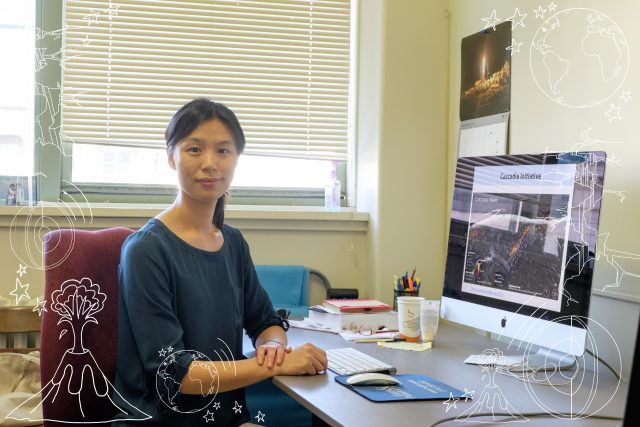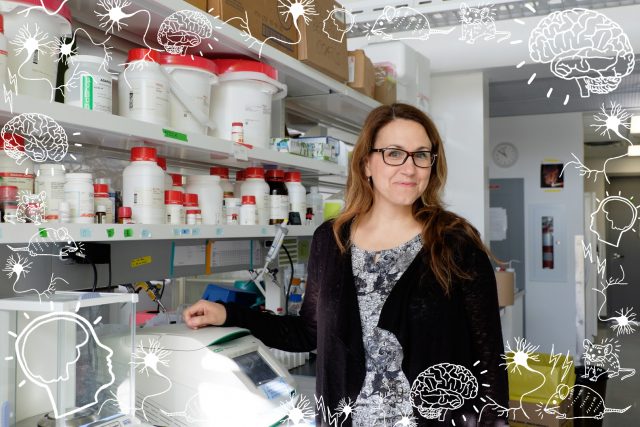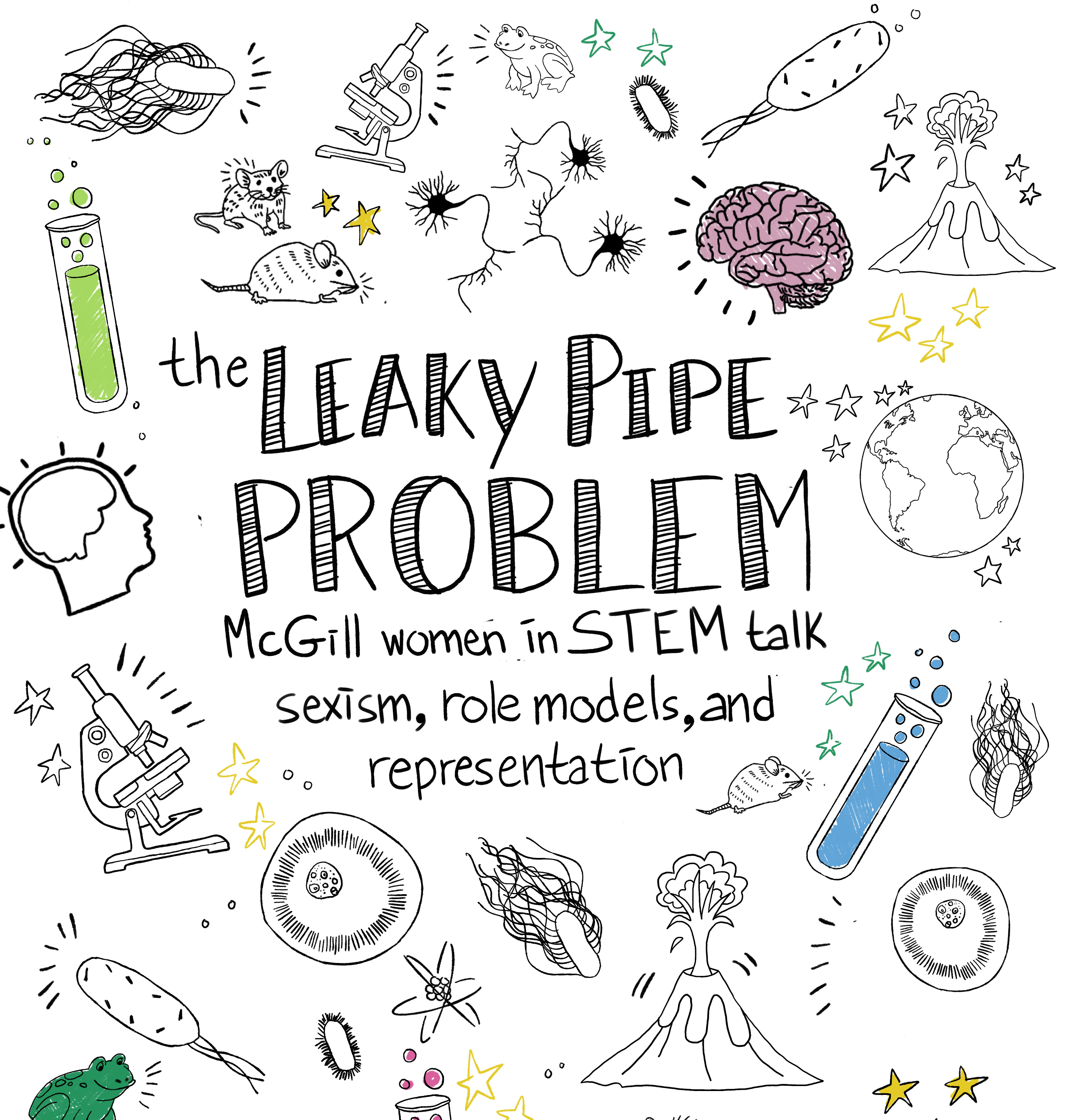In certain ways, feminism has turned into a cliche – and I say this as a feminist. That is absolutely not to say that feminism is not vital to the progression of society towards equity and equality, because it is, no questions asked. But since we’ve tackled the glaring inequities like women’s suffrage, feminists who continue to draw attention to subtler instances of sexism today are accused of simply complaining, or ‘playing the victim.’
Addressing women’s representation – or the lack thereof – in science, technology, engineering, and mathematics (STEM) fields is one such issue. One of the biggest issues that the STEM fields face is the “leaky pipe problem,” the term that describes the chronological decline in number of women that enroll, advance, and remain in the sciences. The source of the problem stems from a lack of a female community and role models, pressure to start a family during the course of their education and research, and internalized sexism. While the under-representation and misogyny in STEM are daunting, I find that focussing on the successes of my female peers and superiors, as opposed to dwelling on instances of sexism, gives me a better sense of motivation and empowerment. I spoke with four women (three professors and one undergraduate student) from different departments at McGill in order to present the variety of possibilities that exist for women in STEM.
I want to add a disclaimer to my article: even considering the challenges I face as a woman in STEM, I fully acknowledge my other forms of privilege. I am lucky to say that I have never felt disadvantaged because of my gender; I was raised with an enormous amount of support from female and male figures in my life. I’m white, my family is upper-middle class, and I grew up in a liberal community. I believe that by recognizing privilege and its effects, we can strive to diminish the arrogance and ignorance that often stems from a closed mind.
The notion of privilege arose in my interviews when each woman told me that they had not felt targeted by explicit sexism – keep in mind these are highly educated women, three-fourths of whom are white, working and studying in Canada. There was a sense of self-definition and self-reliance, the acknowledgement of sexism within the system, but the decision and ability to look past it.
One cannot discuss the general topic of women in STEM without laying down some very real, disheartening numbers, so bear with me: in 2011, Statistics Canada reported that only 39 per cent of all STEM graduates were women. Women made up only 23 per cent of engineers and 30 per cent of those who earned mathematics and computer science degrees; the total Canadian STEM workforce consisted of a mere 22 per cent female professionals. All of the women I spoke with made it clear that by the time they were taking high school science classes, the gender gap was apparent to them.
There was a sense of self-definition and self-reliance, the acknowledgement of sexism within the system, but the decision and ability to look past it.
Sometimes sexism in STEM looks like a classroom full of mechanical engineers, where only three are women. But more often today, sexism becomes so subtly ingrained in a culture that it is barely noticeable – or at least, women feel it doesn’t deserve comment. For the women I spoke with, their choice to study sciences appeared natural, effortless – there was no feeling of having to swim upstream in order to progress in STEM. Perhaps there is a correlation with a lack of obvious barriers, and an obliviousness to the existence of the ‘leaky pipeline.’ But when I pressed them, many of the women recalled incidents of microaggressions or double standards that, perhaps, they deemed too trivial to name ‘sexism.’
Subtle sexism is arguably even more pernicious than overt sexism, since there’s no obvious obstacle to rail against, just the friction of daily invalidation. Jokes among peers that may seem harmless – even to the point where we, as women, laugh along – have a lasting, subconscious effect. The question I was left wondering after the interviews was “what can be done to ensure the initial enthusiasm of young girls in STEM is not trampled by a fear of comparison to one’s male counterparts?”

Yajing Liu
I met with Yajing Liu first. Liu grew up and completed her undergraduate education in China at Peking University, followed by a PhD from Harvard University and postdoctoral research at Princeton University. She told me that she knew she wanted to study physics in high school, by the time she was to take her university entrance exams, and later built upon her initial love for geography by pursuing a geophysics career. Before teaching at McGill, she did research at the Wood Hole Oceanography Institution, which had a teaching affiliation with the Massachusetts Institute of Technology (MIT).
The gender gap was something Liu claims not to have noticed. She mentioned that her geophysics department at Peking University was unique in its relatively good gender ratio of 7:13 women to men, as opposed to the 1:11 ratio in the neighbouring astrophysics department. Liu said that her undergraduate advisor encouraged her, and other women in the department, to include themselves in research. Even so, because geophysics field work involves long hours of driving to remote areas, and the heavy labour of setting up geophysics instruments, Liu told me “some geophysics profs – even though they don’t say it – prefer to not have women, or not many women, in the group for logistical reasons.”
Despite the encouragement from her advisor, Liu noticed the lack of female role models during her studies at Peking University. “Looking back we only had one female prof – who wasn’t even a full prof, and she didn’t do much research,” said Liu, noting that she “wished that my fellow students would have a stronger woman role model on faculty to look up to.”
“Some geophysics profs – even though they don’t say it – prefer to not have women, or not many women, in the group for logistical reasons.”
I asked Liu about when she thought women in STEM were the most prone to “leak out” of the pipeline, so to speak, and she explained that the postdoctorate period is probably one of the most turbulent periods for women. “In grad school you are protected by your advisor, so you’re in a big group, a very supportive environment. By the time of postdoc you’re on your own with an advisor who has their own group, their own students to take care of, and you’re deemed to be independent, self sufficient, because you already have a PhD, so you should be able to support yourself,” she said.
“I think that’s a very critical period for a woman – for everyone, but especially for a woman – because by the time you’re a postdoc you’re probably in your late 20s where most women, at least by current standards, are expected to start a serious relationship or a marriage or a family,” she continued. “There are choices facing you in those two short years: should I do another postdoc if I don’t find a permanent job in academia, because it’s very hard to find faculty positions […] or should I start [looking] for industry jobs, or should I put more time into starting a family? It could be very critical.”
Valérie Orsat
Valérie Orsat is a Montreal local; McGill is both her undergraduate and doctoral alma mater. She decided to pursue engineering as a CEGEP student, and stumbled upon bioresource engineering at a symposium at the Macdonald Campus. Bioresource engineering intertwines engineering and international development; currently, her research is based in southern India. She works with agriculture technology and in the food production industry, as well as micro-companies that focus on empowering women in the agriculture industry. Today, she teaches undergraduate engineering courses at Macdonald Campus.
Orsat recalled and remarked on a lack of self-confidence for women in STEM. “When I started university I had lots of doubt about whether I could perform. I would compare myself to my male counterparts, and they [would] always seem to know things much greater than me, they [knew] how to do everything,” she admitted. She described her engineering undergraduate class as “still a bit of a male-dominated field,” remembering that she “was definitely laughed at a little bit by colleagues: ‘Oh yeah you’ll look funny when you drive a tractor,’ type of attitude.”
“I would compare myself to my male counterparts, and they [would] always seem to know things much greater than me.”
Twenty years later, a similar trend persists in the courses she teaches at McGill: “I see it in the kids that I teach now. […] Girls will be like a deer in headlights, [and admit] ‘I just don’t know,’ while the boys prefer to pretend they know.”
“I know they’re equally scared, but some boys will pretend: ‘ha, it’s easy, I can do this,’ when they’ve never done it, and the girls will all just be scared, period,” she explained. “And then [the girls] get scared that ‘I don’t have what it takes,’ that ‘I don’t have the basics,’ ‘the boys seem to know it but I don’t,’ and that’s not the case, it’s just your attitude and how you approach a problem.”
“We still have work to do in keeping women in the work force, in the professional field,” she noted. “We have no problem right now getting females to register in the program, and they graduate, but many of them [then] move on to something slightly different; they’ll go get an MBA and get more of a management position or go into HR. They’ll kind of deviate, and they won’t really work in the nitty-gritty of an engineering profession.”

Alanna Watt
Alanna Watt is a researcher and assistant professor of molecular biology at McGill. Her research focuses on neurological signals, and she is active in supporting women in STEM through her role as faculty mentor for Scientista, an upcoming club at McGill that hopes to empower female students in STEM. She received her PhD from Brandeis University in the U.S. and completed her postdoctorate research in London before starting her own lab at McGill.
As a professor in molecular biology, as well as a mother, Dr. Watt describes the state of math and physics departments as intimidating to young girls, saying that “It’s hard for women, and maybe it’s hardest at those ages when you’re just being evaluated on how well you can memorize things or how brilliant you can be with just math.”
She described working in her first lab, starting out intimidated but gaining confidence. “I remember being really intimidated and going to a lab meeting and saying nothing, and being like ‘oh my god, I hope they don’t expect me to say anything.’” But she found that working in the lab was “a very empowering feeling,” adding that “it gave me something that actually I seemed to be good at, or you know, at least could hold my own.”
In terms of role models, Watt spoke of her female PhD advisor. “It was really, really important to me to be able to see that there were women doing what I did,” Watt explained. “She had kids, she was married, she was a very fantastic scientist. […] So getting to see someone be so successful both professionally as a scientist, but also as a whole human being is really instrumental.”
Watt said that she found McGill and her department a “very supportive place,” referencing the number of women and mothers in the department. “I remember going to one of the meetings where one of the faculty members, she said so matter-of-factly ‘I’m home with my son who’s sick, so I’m just gonna Skype in for the meeting’ and that was just perfectly fine and I was so happy to be in this environment where you don’t have to hide something like that,” she mentioned.

Christina Santella
Christina Santella is a U3 neuroscience student from Montreal. Pushed to pursue medicine directly from CEGEP, she chose to follow her passion for research, and currently works in the Mogil Laboratory, researching individual pain. A member of Scientista as well as the Neuro Council, she found a community within McGill through her program, clubs, and community, after a difficult transition from CEGEP.
Santella first noticed the gender gap in high school, when she realized that “in physics, it was mostly the guys who were more interested, and in chemistry it was mostly the girls,” a trend which discouraged her from pursuing physics. However, she also said that she never discussed the gender gap before university, noting that “even if there was a gender gap, I just accepted it.”
It wasn’t until Santella was exposed to lab research that she made the decision to pursue graduate school. We discussed how younger academics often have more liberal views than their older counterparts: “That’s where a lot of the issues happen, between PIs [principal investigators] or maybe between postdocs or research assistants and our generation,” she noted. “I feel like our generation itself, inside the programs, are very open.”
When I asked her about sexism in the lab, she brought up more subtle examples: “people are like, ‘Oh, did you flirt with the PI to get into that lab?’” In reaction to those comments, she told me “I guess I laugh along with it because they’re my friends and I know that they’re joking, but I can see how if I were to think about that a little more and let it marinate, it is offensive”
“People are like, ‘Oh, did you flirt with the PI to get into that lab?’”
Patching the pipeline
In my interviews with them, all of the women mentioned the importance of female representation and role models in STEM. Seeing women hold professional research and academic positions makes it easier to imagine yourself in a similar position. For Christina, as an undergraduate student, seeking out people who could be of help was a learning process in itself – one that opened doors to further opportunities at McGill. I wanted to give space and weight to the voices of women in different areas of STEM at McGill, in the hopes that they will serve as role models and positive representation for female students in STEM who don’t know where to turn.
We need to offer the women who want and strive to be in STEM equal opportunities to contribute, and patch up the leaks in the pipeline. Science benefits from differing perspectives and creative processes that people of all genders can bring to the table. If science aims to address universal truths, the entire population must be equally involved in the inquiry.
